Cigar Box: How to Build a Smokin' Cigar Box Guitar for Around $25, Part 4
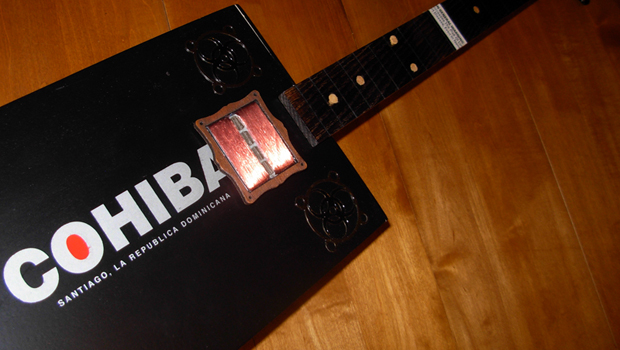
Last time, we had to cut short our discussion about Original-Flatpup pickups.
These are way cool! They offer the sound of a humbucker at about a quarter of the height, which really makes them ideal for cigar box guitars.
As for the tone, they have a "wider" sound. It may be in the way they're designed. Unlike a traditional pickup, the bobbin is on its side, so it creates a wider magnetic field, which picks up a longer length of the string.
One of these pickups has been presented to the Audio Research Institute of the Austrian Academy of Science. I'm sure they will have a better explanation, but for me, what I dig is the cool tone, the fact that I don’t have to cut a chunk out of the top of the box and the fact that it's hand-made. It's made by a person who took the time figure it out -- and then there are the hours spent to make each pickup. If you can't tell, I'm a big fan of DIY/hand-made. Thanks for all of your efforts, Elmar Zeilhofer!
For more information on Original-Flatpup pickups, visit original-flatpup.com
Here is Chris Fillmore trying out an Original-Flatpup. Chris performs with up-and-coming European blues star Meena Cryle. They recently released their second album, Feel Me. (The guitar in the video is a creation of Klangbox Guitars; they have some amazing guitars!)
The CBG (cigar box guitar) artist this week is Reed Turchi. Reed is probably one of the hardest-working men I know. He is president and founder of Devil Down Records, which promotes such acts as Kenny Brown, Little Joe Ayers, North Mississippi Allstars Duo, Fred McDowell and his own band, TURCHI. And WHAT!!! He accomplished all of this while attending college?
Get The Pick Newsletter
All the latest guitar news, interviews, lessons, reviews, deals and more, direct to your inbox!
Reed is a master of the slide guitar. The tone of his guitar just screams! He makes a CBG come to life with the tone, vibrato and picking style, something I hope to have one day. I wish for one 10th of the skill he has.
This clip below says cigar box guitar to me -- just porch sitting, picking, foot-stomping, on a acoustic fretless cigar box guitar. Check him out playing “Don’t Let the Devil Ride” (Yeah, that's a Saner CBG he's playing).
TURCHI also has some great Northern Mississippi Hill Country blues on their album Road Ends in Water. “Dr. Recommended (Satisfaction Guaranteed)," “Be Alright” and “Keep on Drinking” have that old dirty blues guitar tone, and the gritty raspiness of his voice has us hooked. Check out this clip him playing “Mississippi Bollweevil.” (No, that's not a CBG, but it's just too cool to ignore.)
For more info on TURCHI and Devil Down Records, visit devildownrecords.com.
Now back to electrifying our axe ...
First you will need to make a hole in the guitar for your jack. Using a 3/8 drill bit, put a hole in the bottom corner or in the bottom side of the guitar. In the photos and captions below, you'll find some different diagrams on how to wire your CBG.
Tips
• If you're going to use a volume control, you will need to use a 9/32-inch bit to make a hole for the volume post. The next thing I'd do while the soldering iron is heating up is take some steel wool or sand paper and lightly sand the back of the volume control. There's a fine. oily finish on the back of these to keep them from rusting, but it needs removed before you start to solder.
• If you're using a magnetic pickup, you'll need to run a separate ground wire from the back of the volume control to the bridge.
• Sometimes the leads from a piezo can come loose. To help solve that, I wrap the end of the piezo with electrical tape to keep them on.
• Once you've wired you piezo, it's time to choose where to place it in the box. I like placing them on the back box toward the lowest string. I would recommend using some duct tape to hold it in place until you're happy with the sound. Then you can use some epoxy or hot glue to hold it in place permanently.
We've been working on a guitar to show you some of the cool features you can add to your CBG, such as black skull tuners, bio-hazard sound hole covers, some cool speed knobs and, of course, the Original Flatpup pickup. We will have some more info on this guitar up on our site, sanercigarboxguitars.com, but in the photos below we've included a sneak peak!
We're going to have a demo of both guitars and some CBG lessons on our next post, so stay tuned!
Your last recon mission for this project is ...
• Wood: A 2-inch-by-1/4-inch-by-24-inch piece of hardwood for a fretboard (It should be the same width as your neck).
• Frets: They are not necessary but nice to have. I recommend medium-size fret wire. eBay and, you guessed it, CB Gitty are good places to look.
• Superglue: I put a small bead of super glue on the frets to keep them from coming out.
• Sealant: Hopefully you have some leftover sealant from before.
• Wood glue: I like Titebond III the best.
• Black marker: For drawing fret markers.
• Strings: Acoustic guitar strings using the A, D and G. Good gauges for slide guitar are .46, .32 and .25. Some music shops sell individual strings, and CB Gitty has three-string sets.
• Nuts and bolts: #8 - 1 1/2 machine screws and #6 - 1 1/2 machine screws for your nut and bridge. I use these to get a pretty clean look. If you want to keep the DIY look, pick up a 3/8 (or thicker) by 2 1/2-inch I-bolt
• Something to make a slide: A small bit of copper pipe, a socket, a wine bottle (We'll show you how to make one on our site, sanercigarboxguitars.com. Or you can pick a professionally made slide.
• Tools: Four 6-inch bar camps; six to eight 2-inch spring clamps; miter box and saw; coping saw; wire cutters; sandpaper.
I'd like to say thanks to Ben Prestage and Reed Turchi for being a part of the last two articles.
Keep on playing ...
Brian Saner owns Saner Cigar Box Guitars, which makes custom handmade guitars and amps using local dry-aged wood in every guitar. These guitars are handmade and might have imperfections, but that's what makes them unique. Once you hear the howl of a CBG, you might not want to play a Fender or Gibson again. Get one at sanercigarboxguitars.com, devildownrecords.com/guitars and Main Street Gallery. Check out his Facebook page.
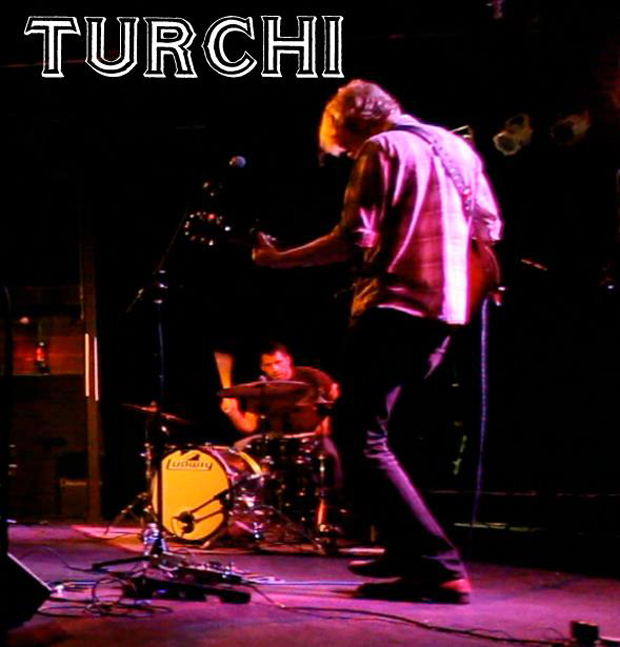
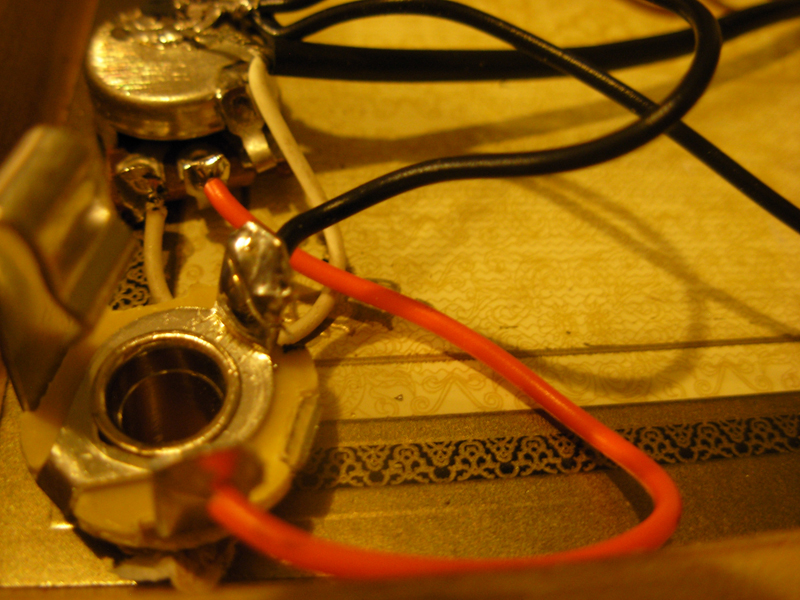

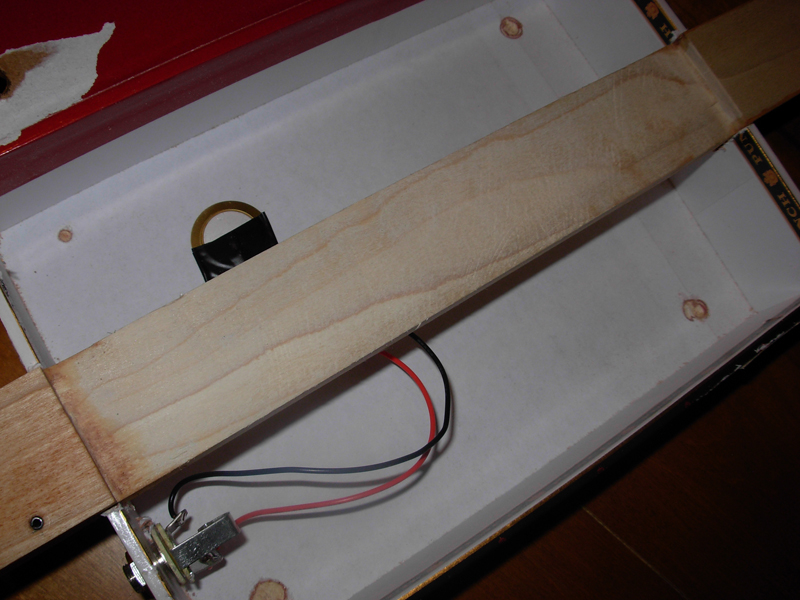
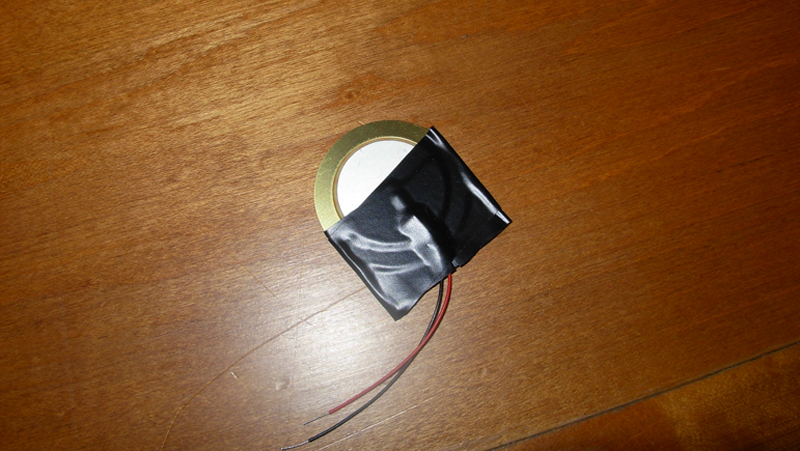
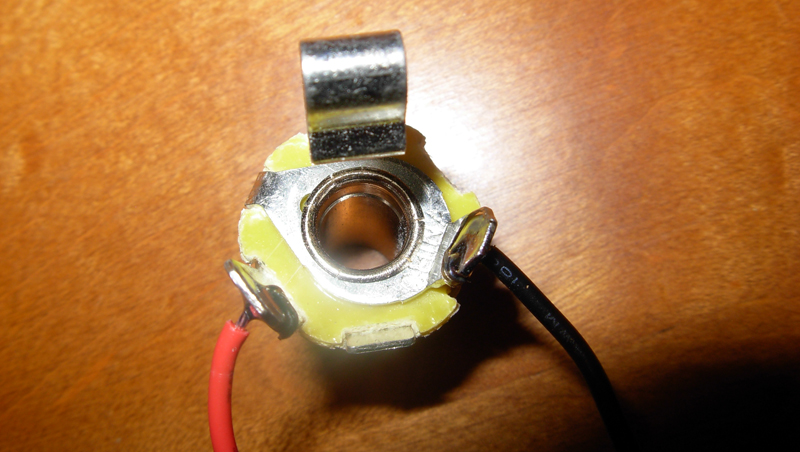
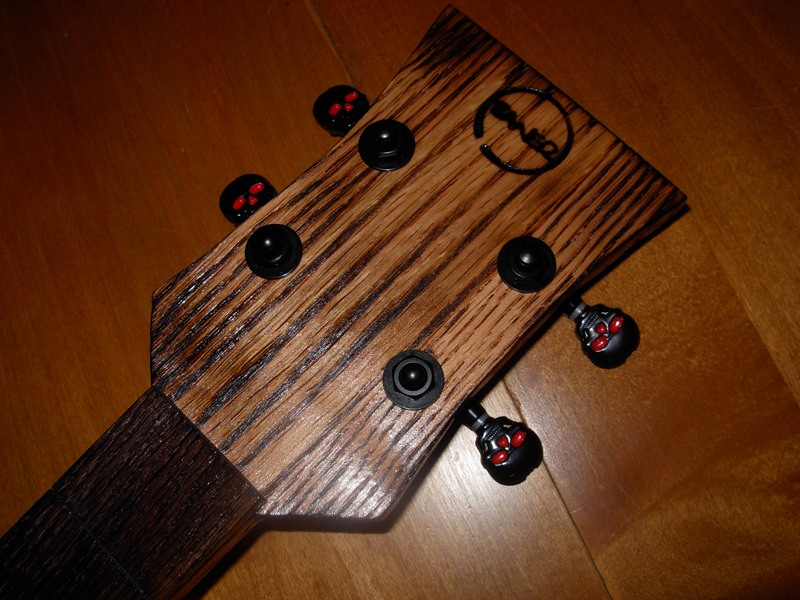
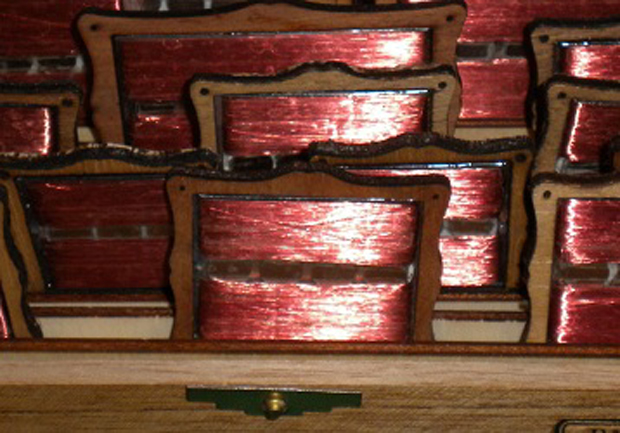
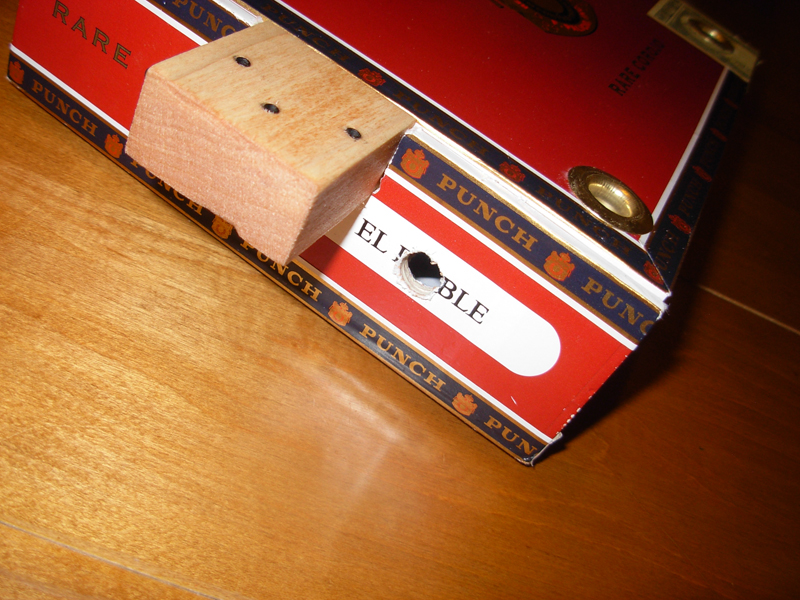
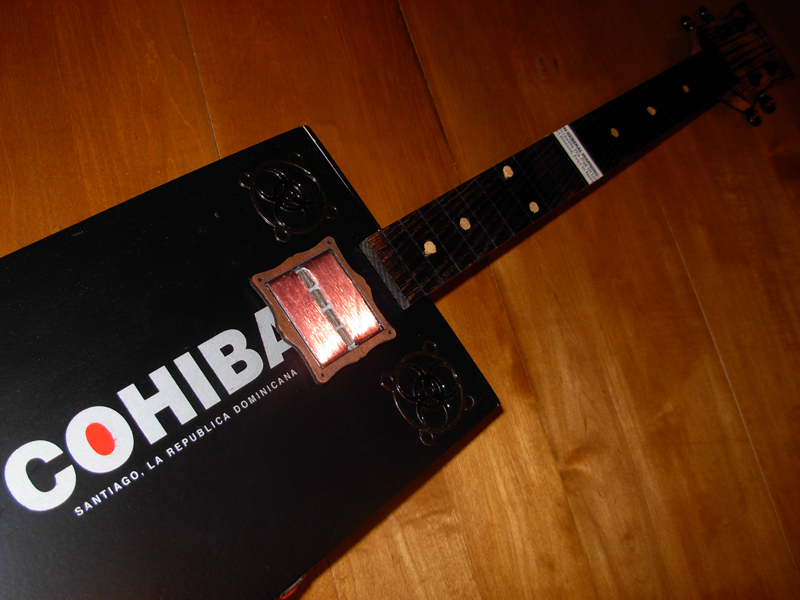
“I met Joe when he was 12. He picked up a vintage guitar in one store and they told him to leave. But someone said, ‘This guy called Norm will let you play his stuff’”: The unlikely rise of Norman’s Rare Guitars and the birth of the vintage guitar market
“This would make for the perfect first guitar for any style of player whether they’re trying to imitate John Mayer or John Petrucci”: Mooer MSC10 Pro review



![John Mayer and Bob Weir [left] of Dead & Company photographed against a grey background. Mayer wears a blue overshirt and has his signature Silver Sky on his shoulder. Weir wears grey and a bolo tie.](https://cdn.mos.cms.futurecdn.net/C6niSAybzVCHoYcpJ8ZZgE.jpg)

![A black-and-white action shot of Sergeant Thunderhoof perform live: [from left] Mark Sayer, Dan Flitcroft, Jim Camp and Josh Gallop](https://cdn.mos.cms.futurecdn.net/am3UhJbsxAE239XRRZ8zC8.jpg)




